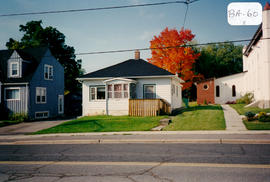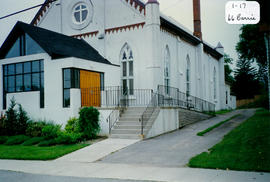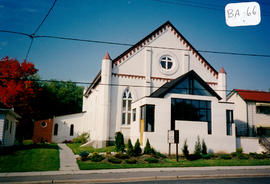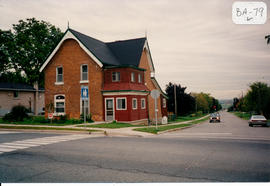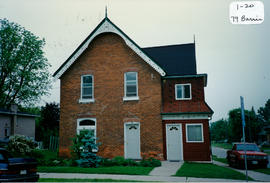Corner of Queen and Moore Streets - Roman Catholic Church
- CA BWGPL 2017-04-18-11
- Item
This structure had a drive shed at the rear for stabling horses while the congregation attended church. The seating capacity was 125. The building had a simple 3-bay rectangular plan with a steep-pitched gable roof. Exterior buttresses and corner turrets (in lieu of a main spire) accentuated the sense of height. The symmetrical layout had a central aisle and an elevated pulpit and sacrament tables located at the front of the church. Large Gothic windows had vertical feature elements and pointed arch tracery. There was also a rose window. The large central entrance had an arched transom above. Solid brick masonry construction rested on a random field stone foundation. This building was demolished in 1957. The replacement church has a larger seating capacity. (3)
Please contact the Bradford West Gwillimbury Public Library (905-775-3328) if you have any other information about this photo.
Janice Hopkins

